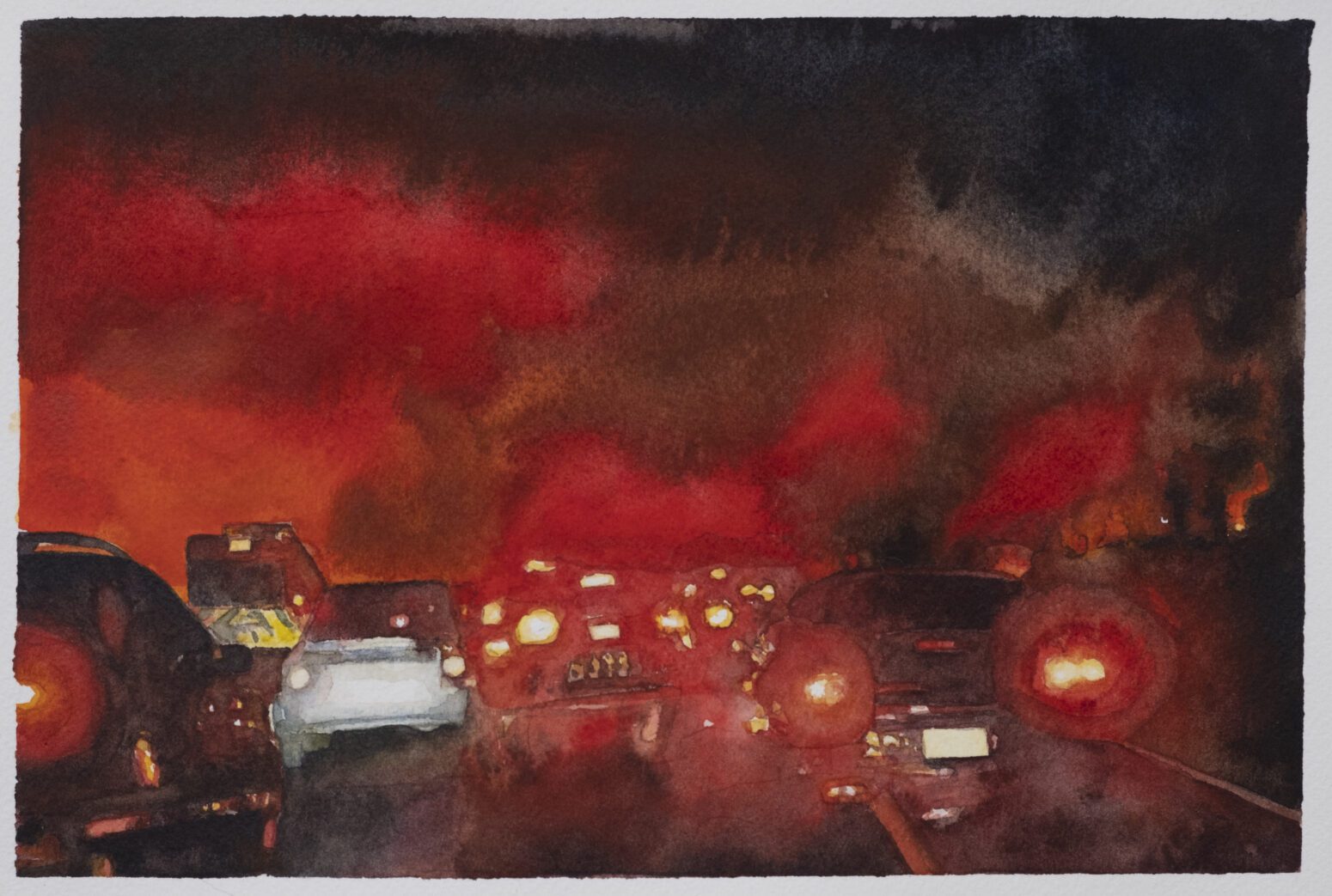Dumpsters and Fires
2 Minutes Read Time

Artist’s Statement and Interview
My paintings are generally small, meticulous, and involve sustained observation of an otherwise ignored or quickly consumed image.
Why/how did dumpsters and file cabinets specifically become focuses of your work (as those otherwise ignored objects)?
In 2016/7, I noticed that file cabinets were accumulating in local thrift stores, and I spotted them on curbs, marked as “free.” When I pointed it out to
friends, they started sending me pictures of the phenomenon. It felt like a sudden, collective decision to rid ourselves of physical memory. I think of each painting as the portrait of a unique presence and history. I am still surprised at how many different models/materials/types/colors of cabinets exist.
Later, I came to be interested in the varied character of dumpsters and took a similar approach. Like the file cabinets, each dumpster registers the physical traces of their long service. I think of both subjects as mute containers.
How does the wildfire series fit into your larger body of work?
To my eyes, the amount of wildfire imagery in the press between 2018 and 2020 was staggering; one spectacular picture after another, day in day out. I wanted to freeze or preserve the moment for some of them, to try to process even one, slowly, over many hours. I wanted to prolong my experience of these events and images through careful attention to their smallest details. (To be honest, I’m not sure how they relate to the previous work, except that perhaps all these images portray some transience, loss.)
What about the medium of watercolor appeals to you?
Oil painting is king because it is archival, durable, and withstands time. Watercolor, on the other hand, is delicate, and its pigments are fugitive if exposed to excessive light. Watercolor is not right for every painting, but for the fires, file cabinets, and dumpsters, it seemed the right choice. Painting fire or rusted metal in water adds a material tension but also emphasizes the organic and fluid nature of these elements. And I was surprised how well watercolor lent itself to the depiction of rust and smoke.
Read more from Issue 22.1.
Select any image to enlarge it









